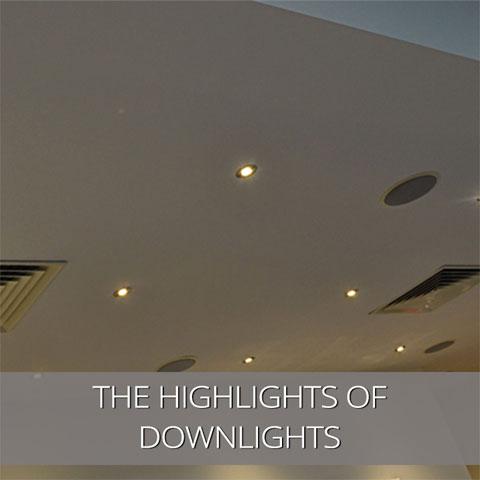The Highlights Of Downlights
If you are looking at installing professional lighting in your kitchen, bathroom, bedroom or living room then the correct choice of product is crucial. Within the kitchen and bathroom down lights have become increasingly popular, if they are utilized in the correct manner they can provide a warm shadow free light.
There are four different types of LED downlights:
- Fixed
- Eyeball
- Gimbal
- Wall Washer
Once you have chosen which downlight product you will install, the most important installation guideline to ensure a professional setup is are the number of lights you install and the positioning of your chosen light.
As downlights are specially installed into your ceiling, certain precautions must be considered. When installing downlights in your bathroom they must be suitably IP rated to protect against the ingress of water.
Another feature you may come across when investigating the product, is whether or not they are fire rated? Fire rated downlights may sound slightly confusing, but essentially it is an important factor to consider. Choosing fire rated downlights can stop the spread of fire. A fire rated downlight has a intumescent strip attached to it. A chemical reaction occurs within the light during high temperatures and this expands thus bridging the hole and stopping any fire from spreading to upper floors.
“What is the correct number of LED downlights for my room?” This is a question we are frequently asked, the truth is there is no rule or formula as each light provides a different output and shape. As a general rule for ambient lighting in a living room, I would suggest installing the first light in a corner of the room, one metre away from both walls. This will allow you to view the lights output and from there you can install your next downlight, you will usually find that between a metre and a metre and a half will be enough.
I have found from experience that the most popular layout position is a square fashion, imagine each light being the corner of a square, and repeat until the ceiling is complete. One of the most important preparation techniques I advise all customers to perform beforehand is to measure out your ceiling and mark with blue tack where you desire the lights.
Make sure that the measurements are symmetrical, if you go for a structured approach and it isn’t the same distance from the wall in each direction it will look unprofessional, and that is not something we want customers to experience. I hope this has provided a small insight into LED downlights and the planning process involved, you can always find more information on our blog or by contacting us directly.

